Related Research Articles

Achziv or Az-Zeeb is an ancient site and depopulated Palestinian town on the Mediterranean coast of northern Israel, between the border with Lebanon and the city of Acre. It is located 13.5 kilometres (8.4 mi) north of Acre on the coast of the Mediterranean Sea, within the municipal area of Nahariya. Today it is an Israeli national park.

Khirbat Iribbin or Khurbet 'Arubbin, was a Palestinian Arab village in the Upper Galilee, located 23 km (14 mi) northeast of the city of Acre. In 1945, it had a built-up land area of over 2,000 dunums and a population of 360 Arab Muslims.

Khirbat Jiddin, known in the Kingdom of Jerusalem as Judin, was an Ottoman fortress in the western Upper Galilee, originally built by the Teutonic Order after 1220 as a crusader castle, 16 km northeast of the city of Acre, which at the time was the capital of the Kingdom of Jerusalem. The castle was destroyed by the Mamluk sultan Baibars sometime between 1268-1271 and lay in ruins until being rebuilt and expanded by the Arab ruler Zahir al-Umar as Qal'at Jiddin in the 1760s, only to be destroyed again around 1775 by Jazzar Pasha. The ruined fortress, known as Khirbat Jiddin, was later inhabited by the al-Suwaytat Bedouin tribe.

Kuwaykat, also spelled Kuweikat, Kweikat or Kuwaikat, was a Palestinian village located 9 km northeast of Acre. It was depopulated in 1948.
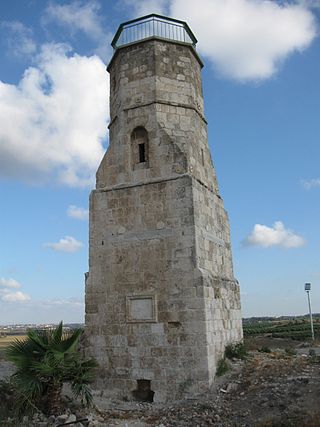
Yibna, or Tel Yavne, is an archaeological site and depopulated Palestinian town. The ruins are located immediately southeast of the modern Israeli city of Yavne.
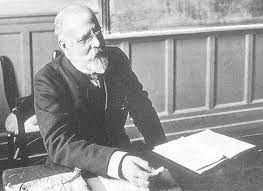
Charles Simon Clermont-Ganneau was a noted French Orientalist and archaeologist.

Romema is a neighborhood in the city of Haifa, Israel. Also known as The Romemot and Ramat Ben-Gurion, it is located east of Ahuza, on the northern slope of Mount Carmel. Today the neighborhood has two sections - New Romema and Old Romema - with a joint population of 8,340.
Jean Barthélémy Richard was a French historian, who specialized in medieval history. He was an authority on the Crusades, and his work on the Latin missions in Asia has been qualified as "unsurpassed". Richard was a member of the Institut de France. He was President of the prestigious Académie des Inscriptions et Belles-Lettres in 2002. He was born in Le Kremlin-Bicêtre, France in February 1921. Richard died in January 2021, two weeks shy of his 100th birthday.

Aqraba is a Palestinian town in the Nablus Governorate, located eighteen kilometers southeast of Nablus in the northern West Bank. According to the Palestinian Central Bureau of Statistics (PCBS), Aqraba had a population of approximately 8,180 inhabitants in 2007.

Mi'ilya is an Arab local council in the western Galilee in the Northern District of Israel. Its name during the Kingdom of Jerusalem era in Galilee was Castellum Regis. In 2021 it had a population of 3,267, all of whom are Melkite Greek Catholics. The town is located immediately to the northwest of Ma'alot-Tarshiha.
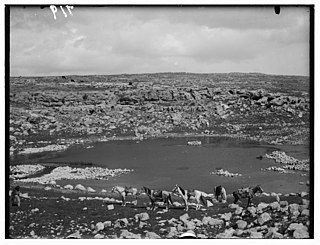
Carmel was an ancient Israelite town in Judea, lying about 11.2 kilometres (7.0 mi) from Hebron, on the southeastern frontier of Mount Hebron.

Léon Gustave Schlumberger was a French historian and numismatist who specialised in the era of the crusades and the Byzantine Empire. His Numismatique de l'Orient Latin (1878–82) is still considered the principal work on the coinage of the crusades. He was awarded the medal of the Royal Numismatic Society in 1903. A large portion of his extensive Crusader coin collection is housed in the Cabinet des Médailles a department of the Bibliothèque nationale de France in Paris.
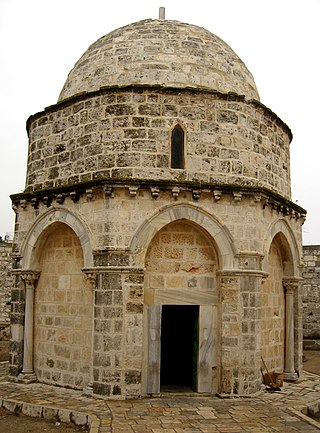
The Chapel of the Ascension is a chapel and shrine located on the Mount of Olives, in the At-Tur district of Jerusalem. Part of a larger complex consisting first of a Christian church and monastery, then an Islamic mosque, it is located on a site traditionally believed to be the earthly spot where Jesus ascended into Heaven after his Resurrection. It houses a slab of stone believed to contain one of his footprints.
Andrew Garrard is a British archaeologist and Reader in Early Prehistory at the UCL Institute of Archaeology. He is a former director of the British Institute at Amman for Archaeology and History. He has written and assisted with a large number of articles and papers. He has a BSc in Zoology and Geology from Newcastle University. Also a postgraduate certificate in prehistoric archaeology from Cambridge University and a PhD in Archaeology, also from Cambridge. He has worked on various project in Jordan and the Qadisha Valley Project in Lebanon.

The Church of Saint John the Baptist is a Catholic church in Ein Karem, Jerusalem, that belongs to the Franciscan order. It was built at the site where Saint John the Baptist is believed to have been born.

The Resurrection Church, or the Church of the Crusaders in Abu Gosh, is the name given to a Catholic religious building consisting of a structure of the time of the Crusaders who belonged to the Knights Hospitaller, and today is a part of the Benedictine monastery in Abu Ghosh, in central Israel.
The Castle of al-Al, also ʿAlʿāl was, according to contemporary Damascene chronicler Ibn al-Qalanisi, a short-lived castle built in 1105 near al-‘Al on the Golan Heights by Hugh of Saint Omer, the man put in charge of the Galilee by King Baldwin I. The location is described as "between the Sawad and al-Bathaniya". Israeli historian Moshe Sharon considers it to be a mere legend rooted in a popular etymology, with no historical base.

The Inn of the Good Samaritan is a national park, museum, ancient archaeological site and former inn administered by the Israel Nature and Parks Authority located near Ma'ale Adumim, halfway between Jerusalem and Jericho, at an elevation of 298 meters above sea level.
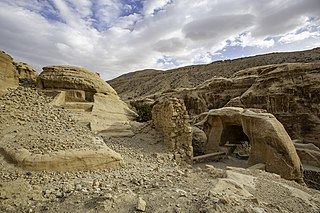
Wu'ayra Castle is a ruined Crusader castle located in Wadi Musa, Jordan, 1 kilometre (0.62 mi) north of the main entrance to Petra. It was founded by Baldwin I of Jerusalem as an outpost of the larger Montreal Castle, which stands about 34 kilometres (21 mi) north of it at Shoubak. The area is extremely rugged and difficult to access. The site rises about 1,050 metres (3,440 ft) above sea level and is surrounded by a natural valley.

John Donald Wilkinson was an Anglican priest and Bible scholar.
References
- 1 2 3 4 5 6 7 8 9 "Professor Denys Pringle". Crusader Studies.
- ↑ Reginald Denys Pringle (1978). "Sixth-century fortifications in Byzantine Africa". Oxford University.
- ↑ "Professor Denys Pringle". Cardiff University.
- ↑ National Library of Israel catalogue entry
- ↑ "Palmarès 2003". Académie des Inscriptions et Belles-Lettres (in French).